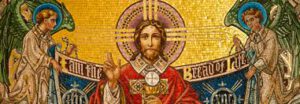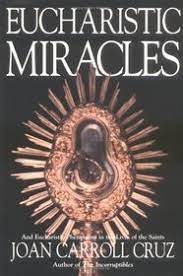In June we celebrate three important solemnities – Pentecost; Holy Trinity; and the Body and Blood of Christ. These solemnities held on three consecutive Sundays form a kind of triptych drawing our attention to those central mysteries of our faith. The first solemnity helps us see the Holy Spirit at work in the Church; the second focusses on the Triune God whose Source is the Father; and the third highlights the Son’s Real Presence in the Eucharist. These solemnities are all so rich in meaning that if we only stop to understand their significance, our faith can easily take on a deeper reality.
Today’s Solemnity, which used to be called Corpus Christi (Latin for ‘the Body of Christ’), is now known as the Body and Blood of Christ, more in keeping with the Eucharistic theology. Really speaking, the solemnity falls on a Thursday after that of the Holy Trinity; but, in India, both solemnities have been moved to the Sunday following, to enable a more worthy celebration. Similarly, the shadow of the Cross falling on the liturgy left little scope to celebrate the institution of the Eucharist on Maundy Thursday. Hence, way back in the 13th century, the Church found it appropriate to bathe the solemnity in the paschal joy.

It is common knowledge that the fateful Thursday that marked Jesus’ final Passover comprised a meal to mark the Jewish thanksgiving to God for delivering the people from slavery in Egypt. That meal, now known as the Last Supper, instantly assumed a new meaning when Jesus proclaimed a new commandment of Love; instituted the Priesthood; and established the Sacrament of Holy Eucharist. Thus, over and above the thanksgiving, the Eucharist involves our participation in Jesus’ eternal Priesthood and a re-enactment of His Sacrifice on Calvary.
The multifarious connotations of the Eucharist are reflected in the day’s readings. In the First Reading (Gen 14: 18-20), we meet a mysterious figure, Melchizedek, king of Salem (presumed to be Jerusalem) and priest of God Most High, on his way to bless Abraham who was returning from a just war. In his thanksgiving to God, Melchizedek offers bread and wine, a common food and drink for the Jews. Christian tradition sees Melchizedek as prefiguring Jesus, who is Priest, Prophet and King; and his offering, in the mould of the Eucharistic Sacrifice.
The Second Reading (1 Cor 11: 23-26) refers to the Eucharist instituted by our Lord. St Paul’s writing of circa A. D. 55 predates the Gospels and is the oldest testimony relating to the Last Supper. Jesus breaks the bread, symbolising His Body, and raises the Cup, symbolising His Blood. He does this for us in love beyond compare and bids us to repeat it as a memorial. So, there is an ineffable union with Jesus Who is present at every Eucharistic celebration.
Finally, St Luke’s Gospel (9: 11-17) talks about the remarkable meal that fed five thousand who had gathered to listen to Jesus. This is evocative of two passages from the Old Testament: the feeding of the Israelites in the desert and of Elisha’s feeding a hundred people with twenty loaves. They herald the Eucharist as food and medicine for the body and soul.
A deeper reality underlies the Holy Eucharist: the miracle of Transubstantiation. When the priest consecrates the bread and wine, ‘there takes place a change of the whole substance of the bread into the substance of the body of Christ our Lord and of the whole substance of the wine into the substance of his blood.’ (Catechism of the Catholic Church, 1376) The species do not change in appearance but turn into the very essence, reality and matter of the Lord’s Body and Blood. It is the Lord’s Real Presence – dwelt on by the encyclical Mysterium fidei.

The Eucharist is indeed a ‘mystery of faith’. St Thomas of Aquinas states that this ‘Sacrament of sacraments’ (CCC 1330) ‘cannot be apprehended by the senses but only by faith. Before him, St Cyril of Alexandria advised: ‘Do not doubt that this is true; instead accept the words of the Saviour in faith; for since He is truth, He cannot tell a lie.’ (cf. CCC, 18) To those who seem unconvinced, the ‘Eucharistic Miracles’ are most likely to provide satisfactory proofs (cf. Eucharistic Miracles and Eucharistic Phenomena in the Lives of Saints, by Joan Carroll Cruz)
As we take a leap of faith and humbly surrender ourselves, the Lord of the Eucharist will reveal Himself to us sooner rather than later. The Eucharist, so rich in symbolism, will bring meaning to our lives. And as we gradually enter into full communion with Him and open ourselves to His Mystery, God will protect the sacred mystery of our lives. In the words of Pope Benedict XVI in his apostolic exhortation Sacramentum caritatis, ‘It is through the working of the Spirit that Christ himself continues to be present and active in his Church, starting with her vital centre which is the Eucharist.’ That’s a wonderful lesson from June’s Mystery triptych!
A very engaging read
Thank you for being regular readers of my blog, Ana and Noel! Have a great week ahead. God Bless.
Very impressive & convincing explanation of the three significant solmenities of the church, that was a joy to read.
Thank you for reading, Flavia! God Bless.